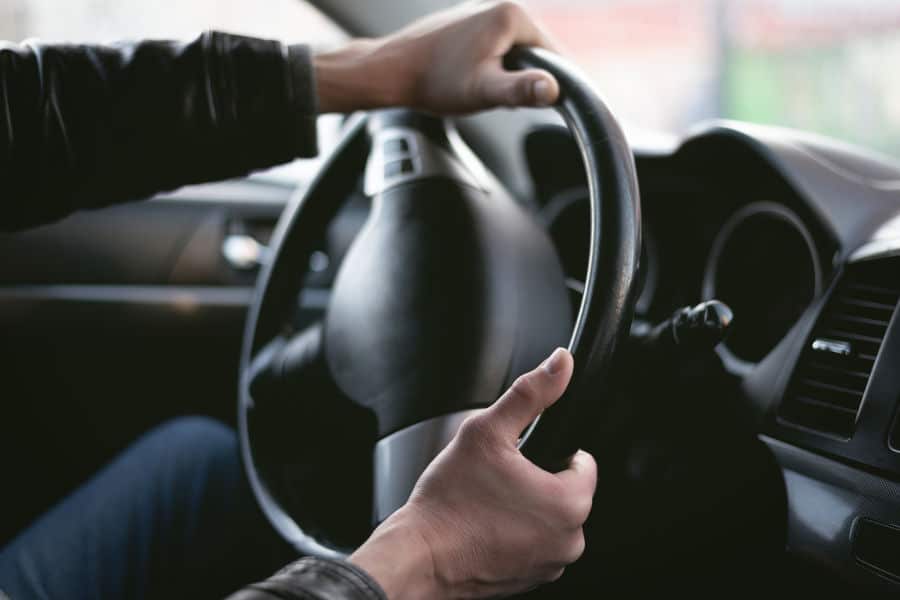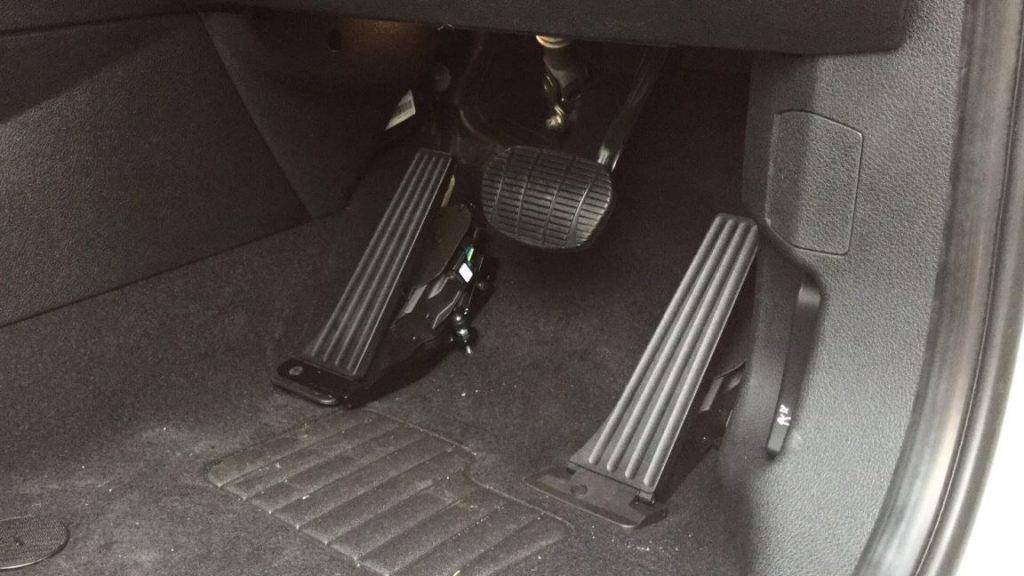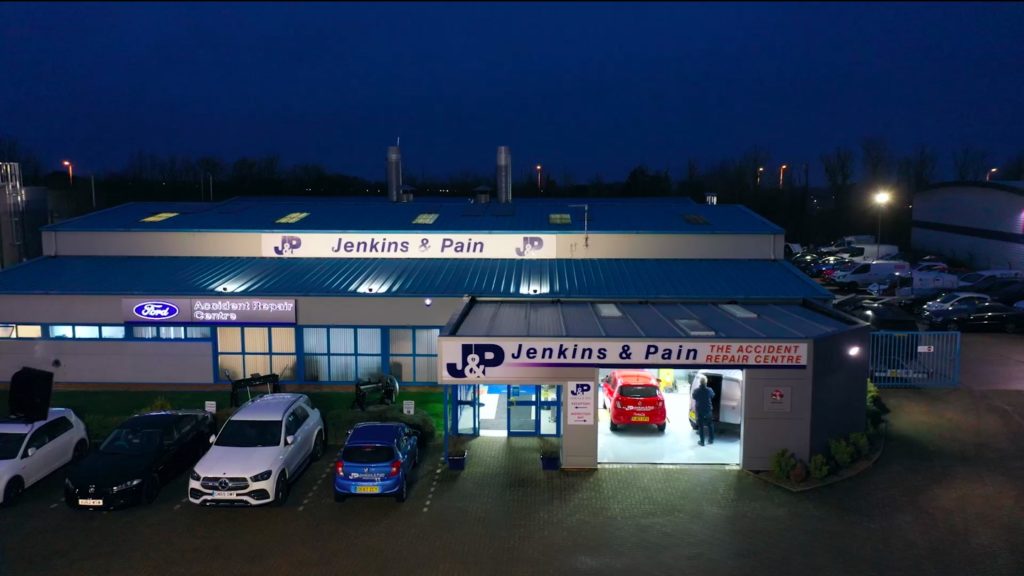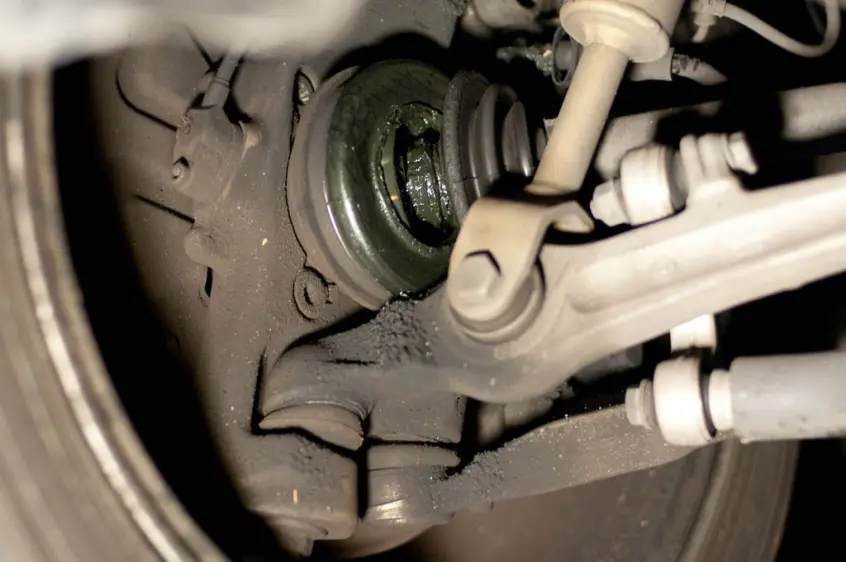Our steering alignment and car dent removal specialists know that the wheels of any vehicle depend on power from the engine in order to make them turn and move the vehicle. The driveshaft (which is also called a propeller shaft or prop-shaft) is the component which is responsible for transmitting this power from the engine to the rear wheels of a vehicle with rear-wheel-drive. If you are driving a front-wheel drive vehicle, then it contains half shafts in order to deliver power to the front wheels. However, in a four-wheel drive vehicle, a driveshaft must deliver the power to both the front and back wheels. For this reason, there are two driveshafts in every four-wheel drive vehicle. One is for the front two wheels and another is for the back two wheels. While most people will likely never have to deal with a bad driveshaft, it can happen. Our ADAS resets experts have explained how a driveshaft functions, in order for you to understand the symptoms of a faulty driveshaft.

How a Driveshaft Works
The driveshaft is what causes any vehicle to move by connecting the rear differential to the car’s engine and transmission. It is a mechanical component shaped like a tube or cylinder which allows the transmission to power the differential – this is how the rear wheels of a standard car are able to move in the first place. As it has to run from the front transmission to the rear differential, the driveshaft is long. To help with its flexibility, U-joints are located at both ends of the driveshaft. This allows for the driveshaft to flex slightly when driving over bumps, potholes, and other imperfections on the road. Power wouldn’t be supplied to the rear wheels without this driveshaft. But don’t worry because driveshafts will not just fail instantly unless you are involved in a serious accident. They tend to slowly deteriorate over time, which gives drivers an opportunity to notice the symptoms of the failing shaft early on. However, you have to be able to recognise these symptoms in order to take action and replace your driveshaft. Otherwise, you could end up seriously damaging your car or ending up in a bad accident.
Top 6 Bad Driveshaft Symptoms
Your vehicle must have a functional driveshaft in order to move properly. If your driveshaft were to ever go bad, then there would be some clearly visible symptoms that would present themselves to the driver. Here are six common signs for you to watch out for.
1. Turning issues
The most obvious symptom of a bad driveshaft is when you have trouble with turning your vehicle. Your wheels won’t receive the proper amount of torque due to a U-joint issue at the end of the driveshaft, so making turns will be very difficult as a result of the additional resistance. Difficulty in turning can indicate other issues (anything from low power steering fluid to a damaged differential), so combine this symptom with additional symptoms explained below to help confirm. Once you confirm that it’s the driveshaft at fault, you need to get it replaced quickly or risk an accident due to being unable to control the vehicle.

2. Squeaking noise
If there is a squeaking sound present that will simply not go away, then you may have problems with the driveshaft. This could be due to worn out internal components, including bushings or bearings within the shaft or U-joint or possibly an imbalance in the shaft. Usually the noise increases as your speed increases.
3. U-Joint Rotation Issues
Your driveshaft has a U-joint which rotates at a steady pace. If the rotation fails or speeds up too rapidly, then it will cause issues with your driveshaft. Perhaps you have a bad U-joint or there is rust on the cap seals of your bearings. This may require you to replace your entire driveshaft depending on the significance of the damage.
4. Clunking Sound
A failing driveshaft could cause clunking sounds to be heard as you step on the accelerator or drive in reverse. These may be in addition to the squeaking sounds that you hear all the time normally. At this point, you should feel more than motivated to want to replace your shaft before any real damage occurs.
5. Vibrations
When you have a worn-out driveshaft, it may cause vibrations to come from underneath the vehicle which can be felt through the steering wheel or through the floor board. These vibrations coupled with another symptom should be a clear sign that your shaft is in need of a replacement. In most of these cases, the shaft may have worn out bushings. Remember that the shaft is held in place by the bushings, so if the bushings are loose, damaged, or worn out, then your shaft will vibrate because of it. As a result, it could lean to your shaft getting damaged.
6. Shuddering While Accelerating
If you experience shaking or shuddering when attempting to accelerate from a stop or low speed, you may have a worn U-joint or centre bearing inside the driveshaft. This will often be accompanied by strange noises as well. You’ll want to get a certified mechanic to check out all driveshaft related components to confirm the issue.

Use Jenkins & Pain, Award-Winning Accident Repair Centre
There you have it, if you do find yourself with damage to your beloved paintwork or steering alignment and need a dent repair, van body repair, ADAS resets or a courtesy car you can count on us to complete all jobs using industry-standard processes. We offer free quotes and with our exclusive repair service, we are sure you will be happy with the results. Contact our Vehicle Body Shop today. Jenkins & Pain are an accident repair centre based in Dover, Kent. We are proud to call ourselves an award-winning accident repair centre. Check out our guide on how to look after your alloys!
Ready to Visit Our Vehicle Body Shop?
We understand how costly and inconvenient it is for a vehicle to be off the road and therefore we use processes that ensure your vehicle is repaired quickly and efficiently. So whether you need minor scratch repairs, major body repair, or alloy wheel restoration, our van body shop and car body shop can guarantee a high-quality service. We also repair light commercial vehicles and motorhomes. Contact us today for a paint repair at our Car Body Shop!



Thank you for your explanation when you told us that a driveshaft refers to the mechanical component that allows the transmission to power the differential so that the rear wheels of a standard car can move. It seems like my brother’s car has a faulty driveshaft according to my uncle who came to check on it this morning since my brother had trouble starting the vehicle. I’ll keep this in mind while I help my brother find an auto service in Lake County that can perform driveshaft repairs.
I was driving home last night when I noticed that my steering wheel felt off since I had trouble turning the car around all of a sudden, so I need a mechanic to check on the issue as soon as possible. I found it helpful when you explained to us that a driveshaft is what causes the vehicle to move since this is what connects the rear differential to the car’s engine and transmission. I’ll keep this in mind while I look for an auto service in Lake County to contact for the repairs my car’s driveshaft needs soon.